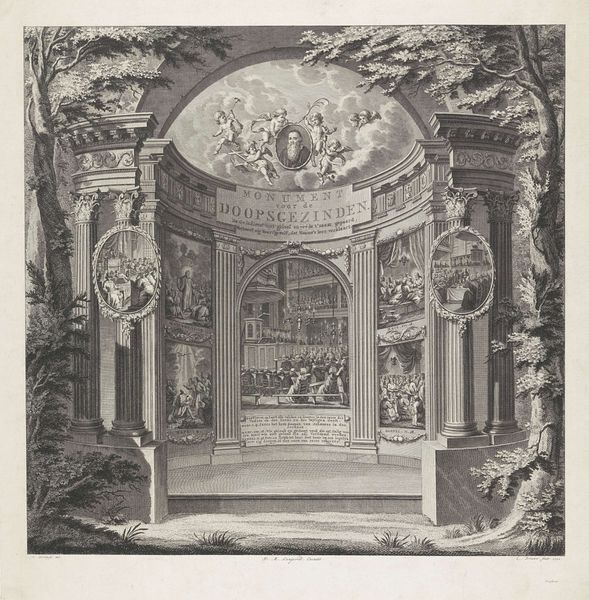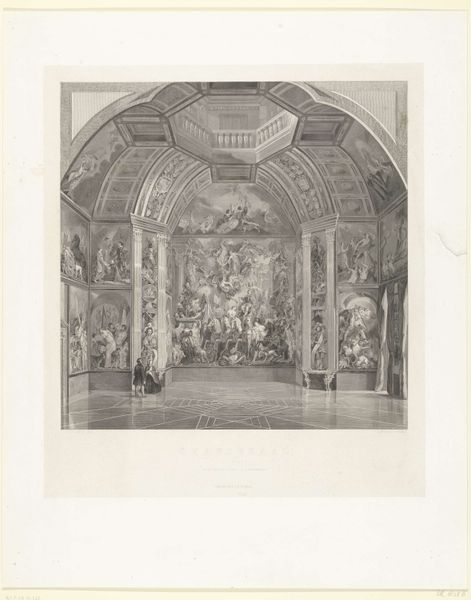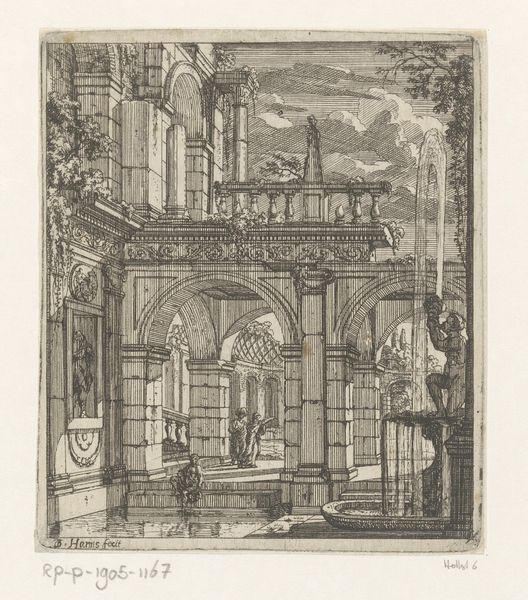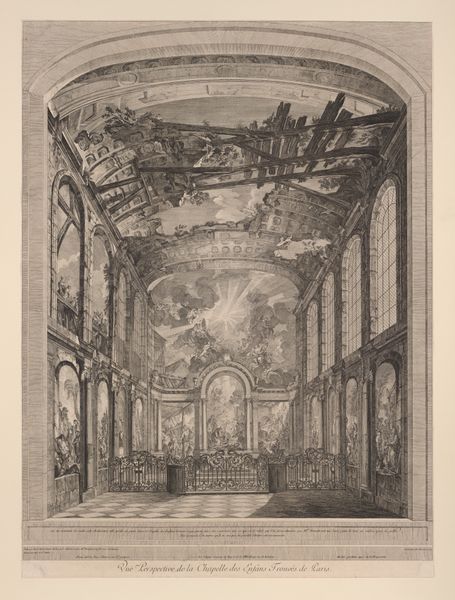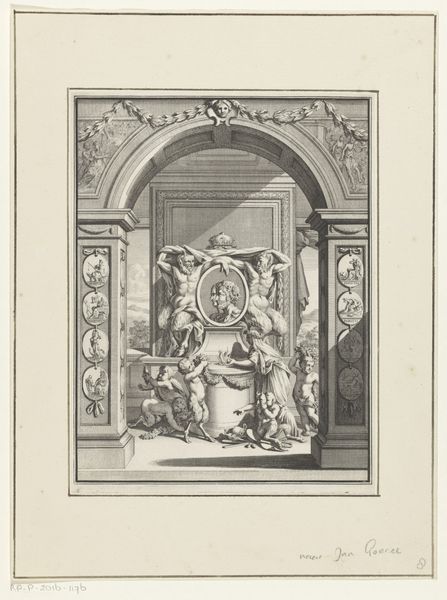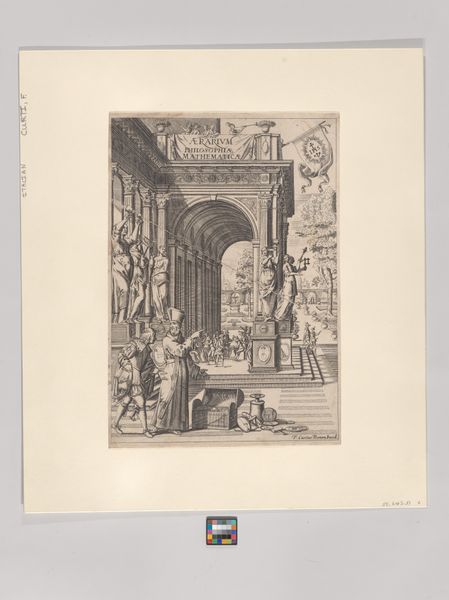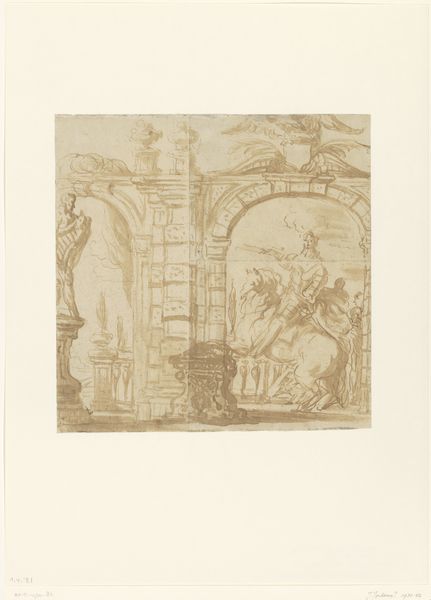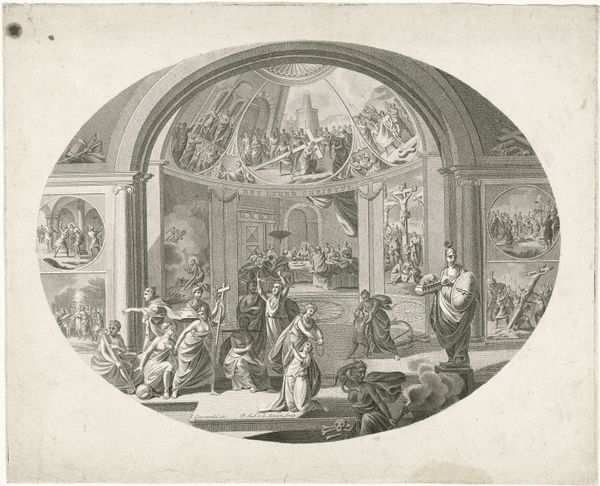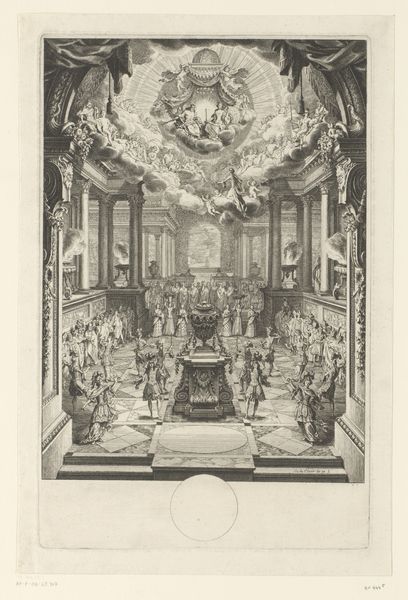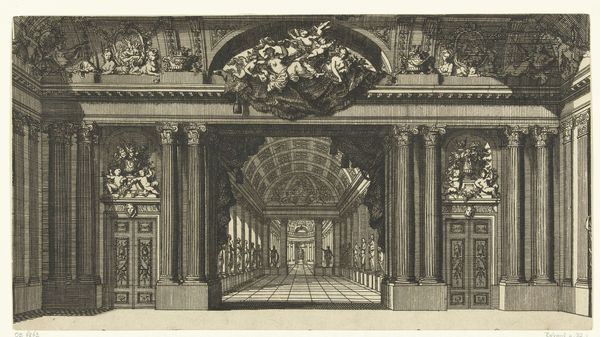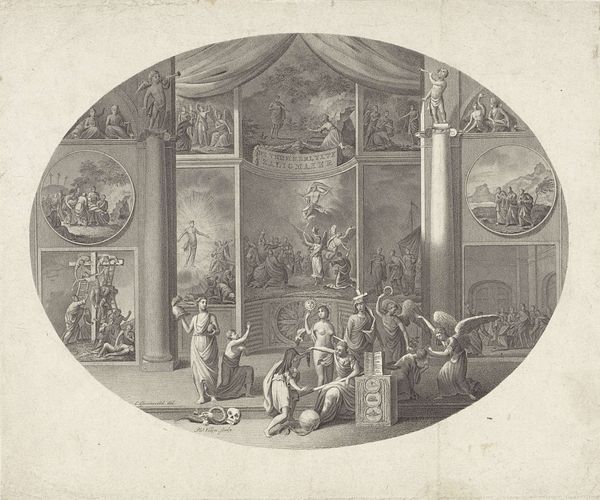
Dimensions: height 470 mm, width 468 mm
Copyright: Rijks Museum: Open Domain
Curator: It feels almost theatrical, doesn't it? The composition and contrast really pull you in. Editor: Indeed. We’re looking at Johan Christoffel Schultsz's "Monument voor de Rooms-katholieke Kerk, 1792," created in 1792. This engraving now resides in the Rijksmuseum’s collection. Curator: Monument seems appropriate. I can't help but feel like I'm looking into some hallowed space of cultural memory, something beyond simple commemoration. There is that layering of interiority—the framed prints within, echoing the architectural framework…it's like delving into a history of faith itself. Editor: The architecture is intriguing, evoking a classical temple-like space blended with baroque sensibilities. This structure frames vignettes detailing scenes from the Catholic history, key events displayed almost like episodes within a grand narrative. What sort of history do you see at play here? Curator: The symbols really dictate how that history unfolds, I think. Note how the figures point and gesture… directing the viewer toward something. A divine drama plays out, yet its roots sink deep into communal practice and history. See those flanking scenes: sacraments, perhaps, or historical episodes rendered almost iconographic. Editor: Absolutely. The monument’s visual rhetoric also signals power; religion so intimately intertwined with sociopolitical authority, especially evident when Catholicism faced growing opposition in the late 18th century. Look closely at the details! It feels propagandistic and functions in the public realm. Curator: Perhaps the Baroque sensibilities feed into that…a grand gesture intending to persuade. Those oval insets act as memory capsules. Consider what Schultsz is preserving—an imagined totality—at this crucial moment. It is no mere "historical painting," but something reaching toward the monumental. Editor: Yes, the interplay of linear detail with depth certainly constructs a symbolic space loaded with messages aimed toward preservation and celebration of this history. It leaves us reflecting on art's potential for social commentary, steeped within ideological conflict and the shifting tides of public sentiment. Curator: Precisely! It allows one to grasp how images don’t simply represent; they construct identity. Schultsz, through symbol and form, has preserved more than just a religion; he's crystallized a legacy, embedded deeply in the visual subconscious of its community.
Comments
No comments
Be the first to comment and join the conversation on the ultimate creative platform.
